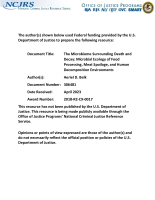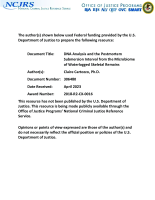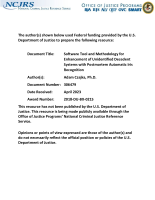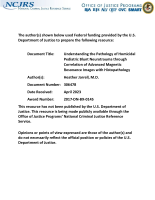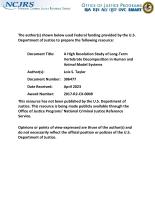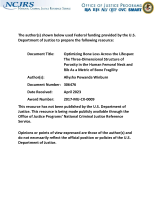Forensic sciences
Infrared microscopy and liquid chromatography applied to problems in forensics and bioanalytical chemistry
Influence of Muzzle Gases on Blood Droplet Backspatter
Fluid mechanics of blood motion resulting from common bloodletting events
Digital In-Line Holography of Blood Atomization
Blunt force trauma to the ribs: Creating predictive models
A Kinetic Model of Evaporation Based on Gas Chromatographic Retention Index: Environmental and Forensic Applications
The Microbiome Surrounding Death and Decay: Microbial Ecology of Food Processing, Meat Spoilage, and Human Decomposition Environments
DNA Analysis and the Postmortem Submersion Interval from the Microbiome of Waterlogged Skeletal Remains
Software Tool and Methodology for Enhancement of Unidentified Decedent Systems with Postmortem Automatic Iris Recognition
Understanding the Pathology of Homicidal Pediatric Blunt Neurotrauma through Correlation of Advanced Magnetic Resonance Images with Histopathology
A high resolution study of long-term vertebrate decomposition in human and animal model systems
Optimizing Bone Loss Across the Lifespan: The Three-Dimensional Structure of Porosity in the Human Femoral Neck and Rib As a Metric of Bone Fragility
Building More Reliable Forensic Sciences, Part 2
The scientific basis of several aspects of forensic evidence was first called into question by the 2009 National Research Council report. That report had an immediate impact on law enforcement, crime labs, courtrooms, and the broader scientific community.



